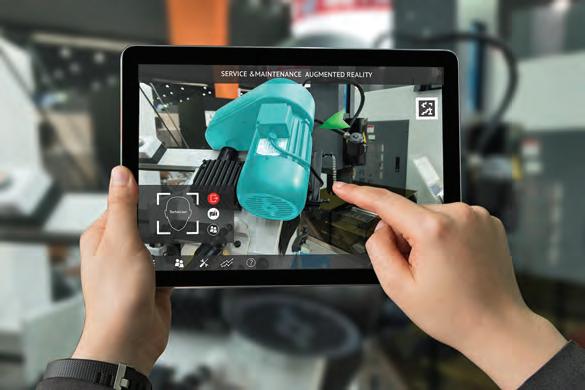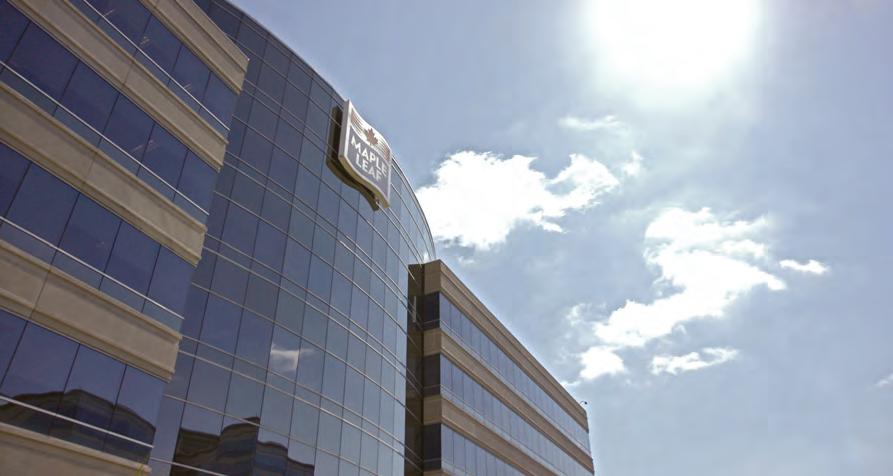
3 minute read
MAINTENANCE Best practices for the management of backlog and spare parts inventory
Best practices for sustainable and costcontrolled material management.
BY STEVE GAHBAUER
Keeping a lid on maintenance costs is paramount to efficient management of the things a plant can control: backlog of work orders, keeping a sharp eye on the number and storage of spare parts, and gate-keeping of the storeroom to control access.
Sustainable storerooms and spare parts programs require the right management and governance to be successful, said James Kovacevic, principal instructor at Eruditio LLC, a corporate training firm based in Mount Pleasant, SC. “Without this, the storeroom inventory continues to grow and leads to an abundance of obsolete or unneeded spares.”
Kovacevic presented a session on storeroom gatekeeping at MainTrain, convened by the Plant Engineering and Maintenance Association of Canada. He suggested the main way to govern spares is a policy that ensures all requests for new spare parts are evaluated, prioritized and ultimately accepted or rejected for stocking in the storeroom.
The key to good storeroom maintenance is understanding the financial impact of poor materials management and to develop a process for evaluating spare parts based on stocking levels and criticality.
He believes this yields significant improvements for the maintenance department and the business.
CMMS/EAM expert Ben Stevens, the principal of DataTrak Systems Inc. in Godfrey, Ont., weighs in on another issue that offers an opportunity to curb maintenance costs: backlog management. He sees it as a very effective way of ensuring work done keeps up with work required. He defines backlog
Keep a lid on COSTS MANAGING BACKLOG, SPARE PARTS INVENTORY Evaluate requests for new spare parts, prioritize to accept or reject for stocking.
as consisting of: work started and on schedule, but not yet completed; work started, but not yet completed, and behind schedule; work planned and scheduled to be started, but not yet started; and work waiting to be started, but not yet planned and scheduled.
He suggests five best practices for effective backlog management: review work weekly; review based on priority; examine reasons for delay; include changes in priority for those that require more time to respond; and initiate action for the top priority work orders that are delayed.
Stevens also writes about spare parts control, which play a key role in the best practices to be applied to the maintenance function. The lack of spare parts availability interrupts the smooth provision of planned maintenance and is one of the major reasons for time and cost overruns, unanticipated failures and lower than expected operational performance.
Spare parts control Apply best practices to two categories of spare parts: common-use low-cost spares, and the slow-moving high-cost parts. The first are best managed using the spare parts module of the plant’s CMMS or EAM systems. In this case, best practices are as follows: • Each spare part stocked should have key data recorded in the CMMS or EAM: part number, standard description, preferred vendor, cost, delivery terms and where used.
PHOTO: DAVID PIMBOROUGH - STOCK.ADOBE.COM
• E stablish minimum and maximum inventory levels by using CMMS/EAM, along with the economic order quantity. • R ecord receipts, issues and returns in the CMMS/EAM to maintain current inventory levels. • When issues reduce the levels below the indicated minimum, initiate automatic purchase requisitions. • For high-priority work orders, reserve and quarantine the relevant spare parts in the CMMS/EAM to ensure they’re not inadvertently used for other jobs. • On release of the work order to the supervisor for execution, issue a pick list to stores so parts can be assembled and delivered to the job site. Stevens says a different approach is required for slow-moving, high-cost critical parts. In this case the lead times are extensive and the high cost of spares militates against stocking them.
Here are the best practices: • Establish the level of reliability needed from the equipment and spare part. • Factor in the frequency of failure. • Factor in the lead times, replacement cost and cost of failure.










